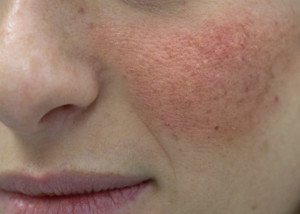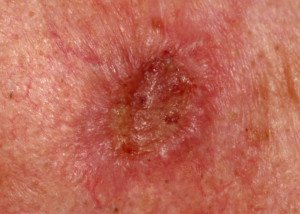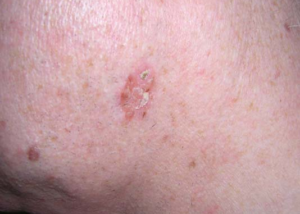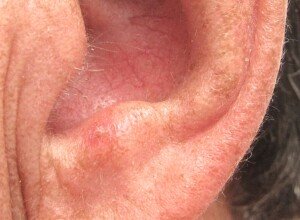
If you’ve just been diagnosed with actinic keratosis, you probably already know that this is precancer and may be panicking.
Your anxiety is now surging throughout your body because (gasp!) you have something called “precancerous lesions” on your skin.
When I was first diagnosed with actinic keratosis, I felt really crummy, sitting in my car after my dermatologist appointment, my face having been sprayed with liquid nitrogen to freeze off the “precancerous lesions.”
What scares people, upon learning they have actinic keratosis, is that other name that’s used for this condition: precancerous lesion.
First off, actinic keratosis is not a precursor to melanoma (meaning, it won’t turn into melanoma), and that’s probably what you’re panicking about.
You’re probably thinking, “I have precancerous lesions; this means I’m gonna get melanoma!”
According to the American Cancer Society, here are the risk factors for melanoma:
• Ultraviolet light exposure
• Atypical moles, especially a lot of them
• Moles present at birth
• Skin that burns easily
• Fair skin, freckles, light hair, light eyes
• Family history of melanoma
• Personal history of basal cell carcinoma or squamous cell carcinoma skin cancers
• Weakened immune system scared
• Older age, especially if male panicpanic
Additional risk factors are having over 100 normal moles, living at high altitude and multiple sunburns throughout life especially during childhood.
As you can see, actinic keratosis is not listed as a risk factor for melanoma.
Another frightening term that dermatologists use to describe these lesions is “premalignant.”
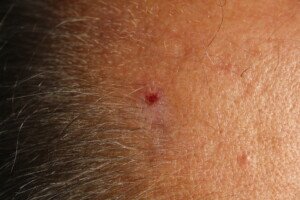
Actinic keratosis. Krizu,CC BY-SA
Actinic keratosis is the result of damage from excessive sun exposure. The cells are atypical. It is this atypical nature that nets the classification of precancerous or premalignant.
The “pre” does NOT mean guarantee.
It simply means that these atypical cells have a higher chance—when compared to neighboring typical cells — of ever becoming malignant.
If left untreated (and why would you NOT treat them?), there’s a very small chance that they will transform into skin cancer – but not melanoma.
The skin cancer is called squamous cell carcinoma – and this IS a risk factor for melanoma.
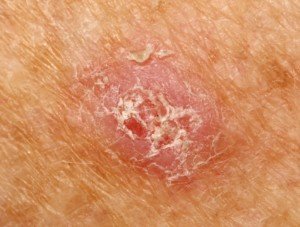
Squamous cell carcinoma. Shutterstock/Dermatology11
It is not nearly as deadly as melanoma, though if left untreated it may spread throughout the body – though SCC tends to be slow growing when still confined locally.
Though squamous cell carcinoma can arise in the absence of a pre-existing (and untreated) actinic keratosis, it can also develop from an untreated actinic keratosis.
“Actinic keratosis is caused by frequent exposure to UV rays from natural sunlight or tanning beds,” says Tejas Patel, MD, a board certified dermatologist with Reforma Dermatology in NYC.
“To reassure patients, it is very important to reiterate that if treated early, these precancerous lesions can be cleared up before progressing into skin cancer.
“Educating patients about preventative measures regarding sun safety is also crucial.
“Patients need to limit sun exposure and tanning bed use, while frequently using sunscreen and receiving skin checks at your doctor’s office.”
NEXT: Percentage of Risk of Actinic Keratosis Turning into SCC Cancer


